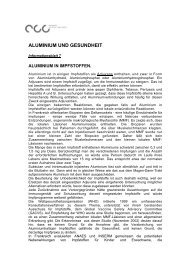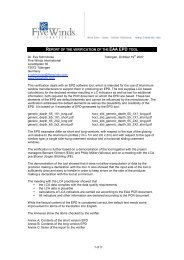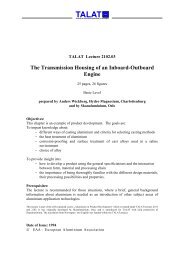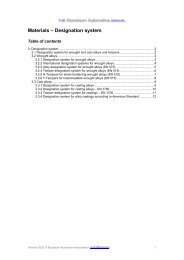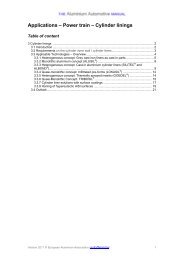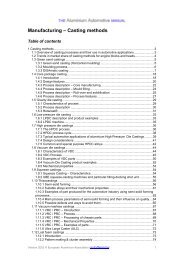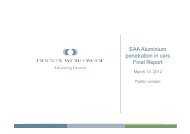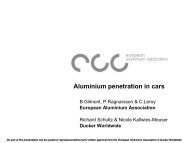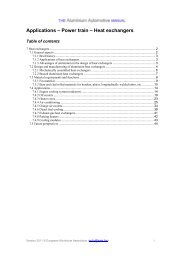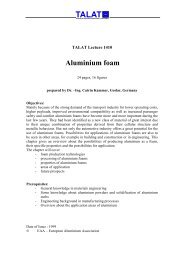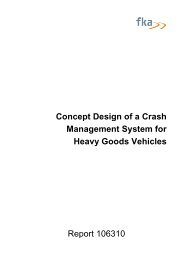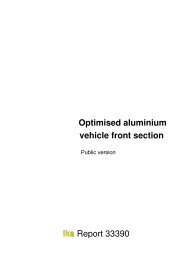aluminium in commercial vehicles - European Aluminium Association
aluminium in commercial vehicles - European Aluminium Association
aluminium in commercial vehicles - European Aluminium Association
You also want an ePaper? Increase the reach of your titles
YUMPU automatically turns print PDFs into web optimized ePapers that Google loves.
64 EUROPEAN ALUMINIUM ASSOCIATION ALUMINIUM IN COMMERCIAL VEHICLES CHAPTER VI<br />
6. Serviceability limit state 7. Ultimate<br />
limit state<br />
All calculations <strong>in</strong> serviceability<br />
limit state are elastic calculations.<br />
Elastic deformations are calculated<br />
and compared with the limits<br />
for deflections. The sizes of vibrations<br />
have to be calculated <strong>in</strong> the<br />
same manner. If the vibration has<br />
a high number of cycles, the<br />
members and the connection<br />
details have to be checked for<br />
fatigue.<br />
Normally the calculations of elastic<br />
deflections are based on the<br />
moment of <strong>in</strong>ertia for the gross<br />
cross-section of the member. For<br />
members <strong>in</strong> cross-section class 4<br />
(see section 7.2.4 <strong>in</strong> EN 1999-1-1)<br />
it is necessary to reduce the<br />
moment of <strong>in</strong>ertia, if the stresses<br />
of the compression part of the<br />
cross section are higher than the<br />
stresses when local buckl<strong>in</strong>g<br />
occurs.<br />
Moment of <strong>in</strong>ertia for calculation<br />
of deflections for cross section<br />
class 4 members:<br />
I = I - ser gr σgr fo (I gr - I eff )<br />
Where:<br />
σ is maximum compressive<br />
gr<br />
stress <strong>in</strong> serviceability limit state<br />
<strong>in</strong> the cross section, based on the<br />
gross cross-section properties<br />
(positive <strong>in</strong> the formula)<br />
I is the moment of <strong>in</strong>ertia for<br />
gr<br />
the gross cross-section<br />
I is the moment of <strong>in</strong>ertia of the<br />
eff<br />
effective cross-section <strong>in</strong> ultimate<br />
limit state, with allowance for<br />
local buckl<strong>in</strong>g<br />
7.1. Cross section classes<br />
Cross-sections are classified <strong>in</strong> 4<br />
classes. In Table VI.2 the different<br />
classes identify how the<br />
cross-section behaves dur<strong>in</strong>g<br />
compression and bend<strong>in</strong>g. This<br />
is directly l<strong>in</strong>ked to the resistance<br />
(load bear<strong>in</strong>g capacity) of the<br />
cross-section.<br />
Th<strong>in</strong> parts of a cross-section may<br />
buckle at low stresses, and this<br />
will reduce the resistance of the<br />
cross-section. This is taken care<br />
of with the rules for cross-section<br />
classification.



